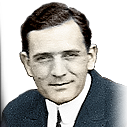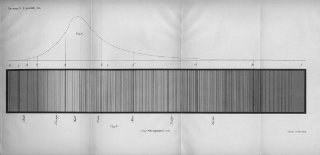Bessel's 1838 Parallax of 61 Cygni: The first page of Bessel's original article in Astronomische Nachrichten of 1838.
Credit: University of Heidelberg
Once astronomers could look at the stars in more detail, it was finally possible to answer questions such as, How far away are the stars? And, of what material are they made? In 1838, Bessel was able to make one of the first accurate calculations of the distance to a nearby star; two other astronomers would also measure a stellar parallax about the same time! Only a few years before this, a German physicist laid the groundwork for astronomical spectroscopy by using a grating to disperse the light from the Sun.
Josef Fraunhofer invented the spectroscope in 1814 and used this new instrument to study our Sun. He labeled about 574 dark lines within its spectrum. Decades later, Gustav Kirchhoff and Robert Bunsen, a German physicist and chemist respectively, were researching the emission line spectra of various elements in the laboratory. In the course of their research, they noticed that in some cases observed emission lines corresponded to the absorption spectra observed by Fraunhofer in the spectrum of the Sun. This meant that the elements they were studying in their laboratory were also present in the Sun. This discovery enabled astronomers to make determinations about the elements that can be found in a star by looking at their spectra. Eventually William Huggins, an English astronomer in the late 1800s, was able to discover the same lines in the spectra of distant galaxies.



